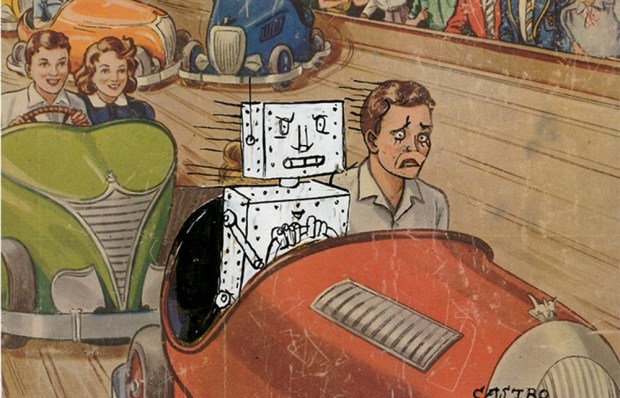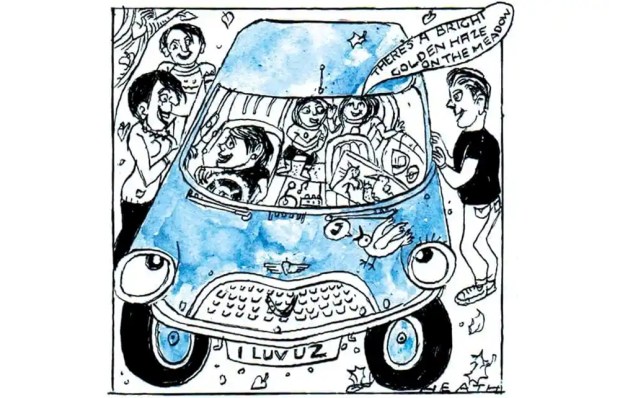Some years ago, an Australian neurologist was in the habit of walking barefoot across his lawn. This being Australia, the lawn was slightly prickly, and the experience was painful but not intolerable; until one day, when one of the pricks in his heel was more pronounced than usual. He had been bitten by a snake and, again this being Australia, the snake was highly venomous. Doctors saved his leg and he made a complete recovery. But there was one lasting side-effect: he now found walking across his lawn agonising.
In terms of the stimulus to his feet, nothing had changed. What had changed was how his brain processed the stimulus. What was once a mildly aversive discomfort was amplified by a learned fear into something much more painful.
My contention is that a similar mental process may have taken place in relation to many forms of travel, especially commuting. The daily grind of the journey to work wasn’t quite so onerous when you saw it as unavoidable; but after two years spent learning of easier alternatives, our reaction to the pain and cost of commuting every day has gone from grudging acceptance to extreme irritation.
I would be surprised not to see an exodus from megacities over the next few decades. But this isn’t only driven by psychology: it’s driven by pure mathematics. Let me explain.
First, there’s that old chestnut A = πr2. Area increases exponentially with distance. Within one mile of work, there are three and a bit square miles of space available. Within 100 miles, there are 31,416. The odds of finding somewhere affordable and pleasant increase enormously with distance.
But there is also the Sutherland number. I am calling it the Sutherland number in an unlikely bid to attain the highest kind of immortality, which is to have a number named after you (Dunbar, Planck, Bohr, Ramanujan). The Sutherland number is 6.25.
Here’s how you arrive at it. In the old days, if you decided to move from London to, say, Whitstable, you made a heavy tradeoff. You enjoyed two days, typically Saturday and Sunday, by the seaside, but the price you paid was five days of a lengthy and costly commute. Two nicer days in return for five much crappier days; a ratio of 5:2. Now, however, if you only have to travel into London two days a week, the ratios are reversed. You get five days by the seaside in return for two days travelling – 2:5. The ratio of desirability hence increases by a factor of 25/4 which is 6.25.
In a recent survey, one third of Londoners agreed with the statement that: ‘There’s no point in living in London except for work.’ A further third were undecided. Given that the cost-benefit ratio of living further afield has just shifted by a factor of 6.25 (that’s the Sutherland number, remember), it would be vanishingly unlikely not to see an effect.
I understand why London commercial property owners do not welcome this. Why Conservative politicians do not welcome it is a mystery. Rather than berating his remote staff, Jacob Rees-Mogg should be moving them to Yorkshire. Why? Because space, car-ownership, home-ownership and affordable family-formation make people more Conservative.
Economics alone do not explain politics. Londoners, although they are well paid, are effectively serfs in suits. They rent homes, can’t drive, rely on the state to move them about and can’t afford to spawn. Hence they vote left. Give them a bit of space, a house and a motor, and they’ll be Conservatives.
I’ve got a pinko student daughter who keeps going on about ‘the violence inherent in the system’. It doesn’t worry me. On her 25th birthday I plan to buy her ten acres of woodland and a pick-up truck. As with snake bites, there’s an antidote to everything.
Got something to add? Join the discussion and comment below.
Get 10 issues for just $10
Subscribe to The Spectator Australia today for the next 10 magazine issues, plus full online access, for just $10.
You might disagree with half of it, but you’ll enjoy reading all of it. Try your first month for free, then just $2 a week for the remainder of your first year.















Comments
Don't miss out
Join the conversation with other Spectator Australia readers. Subscribe to leave a comment.
SUBSCRIBEAlready a subscriber? Log in